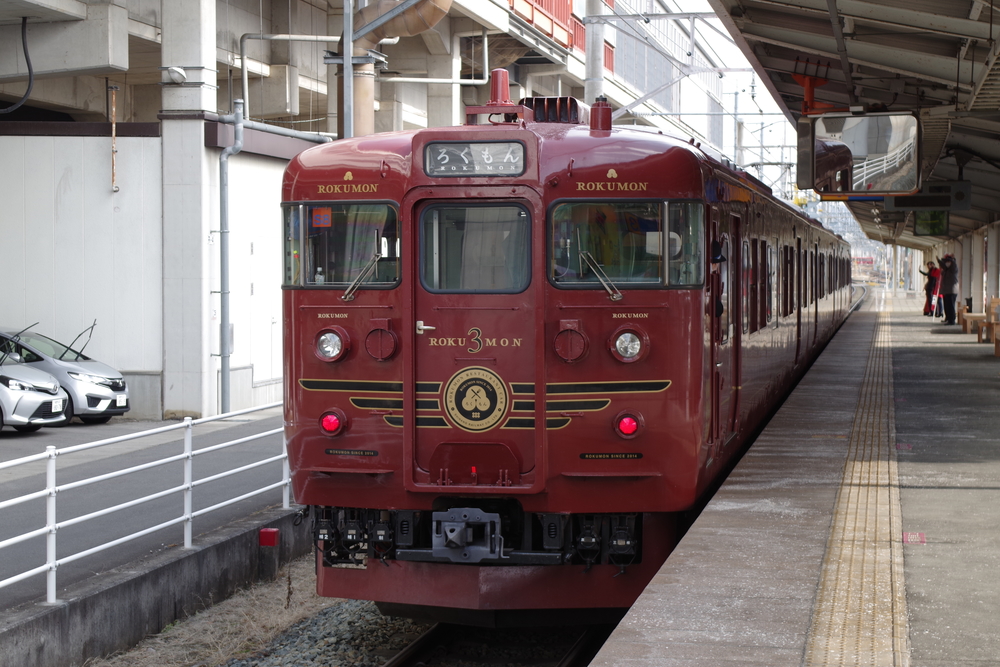Temples, Cooking Classes, and Snowshoeing in Nagano
Find inner peace through Buddhist temple rituals and a hike through an enchanting forest, while picking up some new Japanese cooking tips along the way.
Update:2020/02/17


Are you looking to experience the spiritual side of Japan? Then Nagano may just be the place for you. This prefecture has a lot more to offer than just the snowy mountains in the winter. Locals welcome guests with open arms year-round, feeding visitors' bellies and souls with delicious food and warm smiles. From a serene overnight temple stays to hiking through trails lined with giant cedar trees, follow this itinerary to experience a day of adventures near Nagano City.
Morning: Rise and Shine at Zenkoji Temple

All meals at the temple lodge are vegetarian and can be made vegan on request.
Enjoy an overnight stay at the famous Zenkoji Temple, right in the heart of the city of Nagano. After a cozy night in one of their private tatami mat rooms, wake up with the sunrise (between 5:30 a.m. and 7:00 a.m. depending on the season) to experience a side of temple life most visitors don't get to see. In the morning a volunteer English guide will greet you at the temple lodgings to accompany you through the main areas of the large temple grounds while explaining Zenkoji's long history and significance.
Check out this article to find out more about an overnight stay at the temple.

Zenkoji Temple dates back to the early 7th century, and the city of Nagano was built around the temple. One of the unique aspects of Zenkoji is that although it is a Buddhist temple, it is not affiliated with any sect, making it a welcoming place for people of all religions.
Experience the Morning Ritual at the Main Temple Hall-O-Juzu Chodai



Every morning the high priest and priestess of Zenkoji lead a religious ritual. Visiting worshippers kneel along the path towards the main temple hall. As the priest and priestess approach the temple, they gently touch the heads of worshippers with their rosary beads (juzu). They then join the other temple monks inside the main hall in order to intone the morning prayers. Guests are highly encouraged to participate in the blessing and the prayers, a truly unmissable experience. Buddhist prayers sound very calm yet powerful, as they keep the same beat and tone while changing the intonation, an impressive combination of sights and sounds.
Walk Through the Dark to Find Paradise-Kaidan Meguri

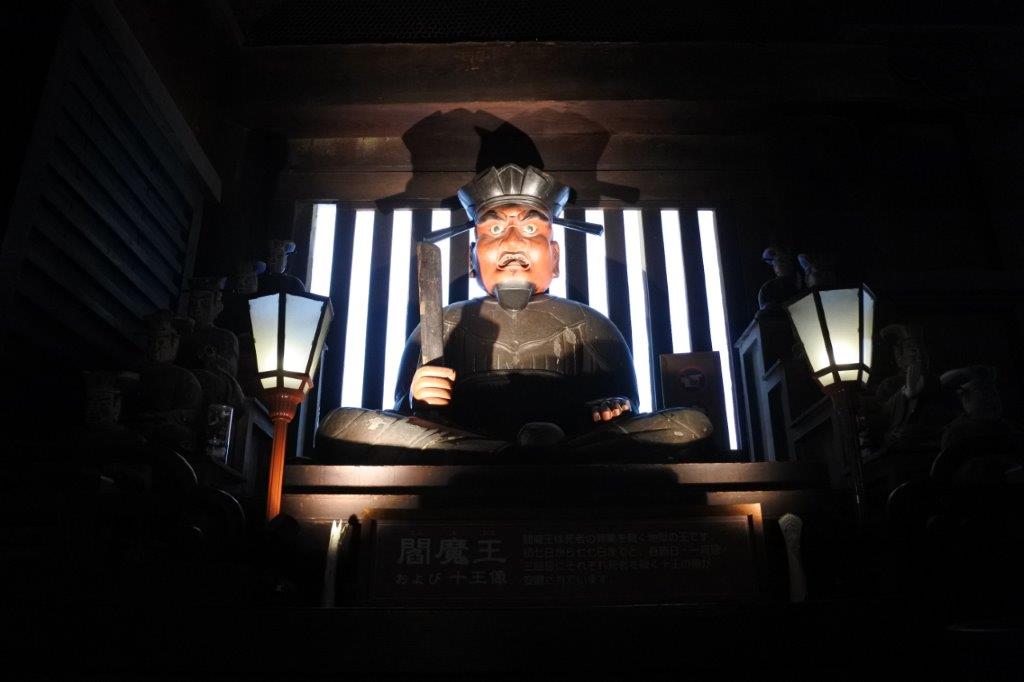
The Kaidan Meguri is, in essence, a short pilgrimage within the temple's main hall. Visitors can take short set of stairs down into a pitch-black passageway and follow along the wall with your right hand. Those who find the "Key to Paradise" are said to be blessed with enlightenment and rebirth in paradise. The passageway follows the path leading to the Amida Nyorai ( the Buddha of Limitless Light) statue which sits directly above the passageway. It can be a bit frightening to walk in complete darkness, but there is no way of getting lost inside and there are no hurdles, making it quite safe.
Prayer Scripture Writing-Shakyo

Step out of the main hall and over to the monks' hall to take part in other temple experiences. Start with shakyo-tracing prayer scriptures using a brush and handmade ink. There are guided sheets for participants who are not familiar with the Japanese characters. After tracing the prayer, participants can sign their name and choose a prayer to include on the sheet, for everything from good health to safe travels. There are quite a few options listed out in Japanese and English.
Writing shakyo is a very cathartic experience, and one that many people take part in monthly at temples like Zenkoji. The local shakyo writing group meets once a month in the large hall, and each participants writes out a long-form 200 character prayer on a sheet. Participants leave once they have completed the prayer. Some have practiced shakyo for years, and say that it helps them feel calm and find peace.
Buddhist Zen Meditation-Zazen
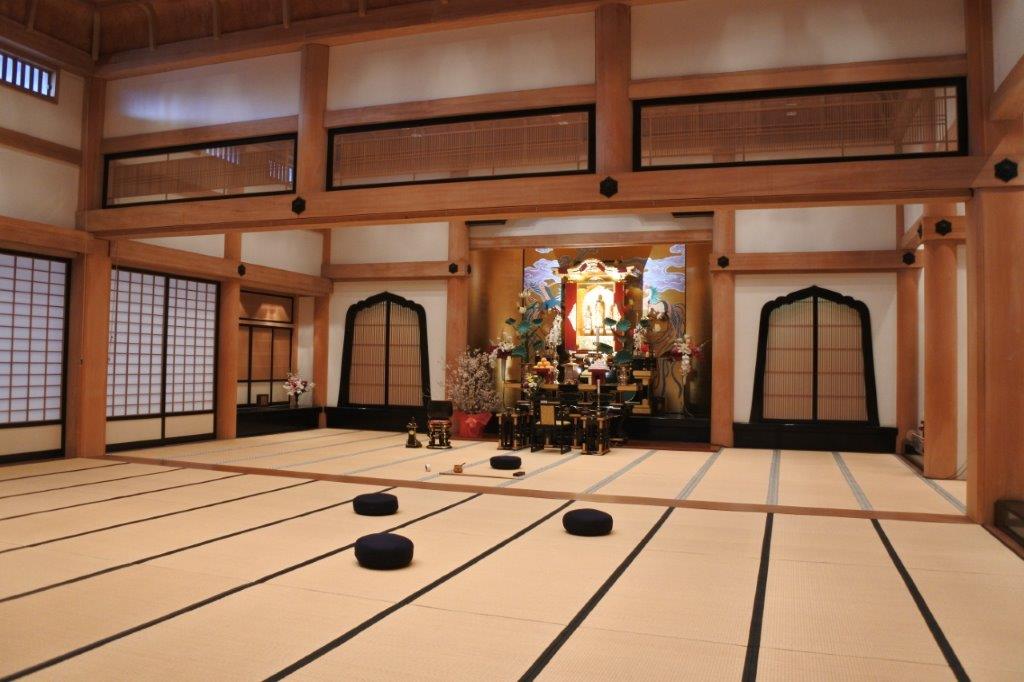
Another cathartic-and popular-experience at Zenkoji Temple is zen meditation. Held in a large tatami mat hall, participants sit on the ground and first learn about the posture, breathing methods and the significance of meditation from the monk leading the session. Afterwards, the monk will pray as participants sit with their eyes closed and meditate. Just be prepared for when the bell rings and participants are hit on the back with a flat wooden slat (keisaku) to counteract sleepiness and sore backs from the zen posture. It is not at all painful, and actually rather a relief from stiffness.
On average, first-time participants meditate for about 10-15 minutes. However, longer meditations can be requested, and some practitioners even stay nearby in order to meditate for a few days.
Wander Down Nakamise and Omotesando Road

The first place people think of when hearing "Omotesando," is the crowded high-end shopping district in Tokyo, lined with brightly lit international designer brand shops. However, Nagano's Omotesando is quite the opposite. The long shopping street in front of the temple still resembles what it looked like during the Edo (1603-1868) and Meiji (1868-1912) periods. The retro wooden buildings are nicely preserved, and the street is usually peaceful and quiet, especially in the evenings.
Most of the shops are small family businesses, ranging from snack stalls, to a ninja goods and experience shop, and a store specializing in delicate Japanese paper (washi). There is also a surprising number of small pharmacies, as Nagano is known to prefer family-owned independent pharmacies over large corporations. Zig zag through your way around the area after exploring the temple grounds. During the winter holiday season, after dark the trees along the street twinkle with thousands of romantic fairy lights.
Nagano soul food: Make or buy some tasty oyaki!

Oyakiare one of Nagano's signature foods, a glutinous steamed or pan-seared bun with a variety of sweet or savory fillings. There are dozens of flavors to try, from nozawana pickled vegetables to sweet azuki red bean paste, apple compote and more. In Nagano oyaki are sold as commonly as onigiri rice balls at convenience stores!

Stop by the Ogawano-sho oyaki shop along Omotesando Road to go behind-the-scenes on how these delicious (and healthy) buns are made. They offer an hour-long experience, which includes making two oyaki from scratch, and watching the shop's owner cook them right in front of your eyes on the irori-a traditional Japanese fireplace. The friendly staff and the jokester couple who own the shop make this a fun experience. And your own freshly handmade oyaki are sure to taste amazing!
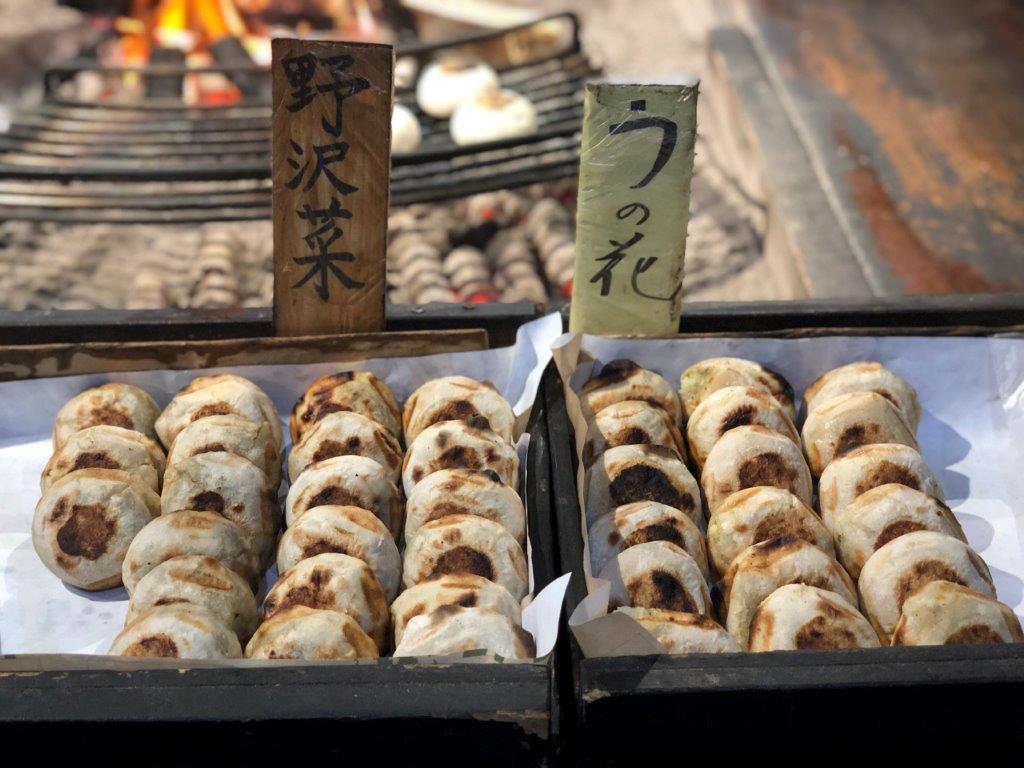
The shop also has about a dozen different oyaki flavors to choose from. They are available fresh or frozen, so you can eat them while meandering, or take them away for later!
Lunch: Soba Making with a Ninja in Togakushi

After a refreshing morning at the temple and nearby shopping street, it's time to head to the forested hills of Togakushi, an enchanting mountain village. Just hop on one of the regular public buses departing from Nagano Station, and ride for 40 minutes. You can choose to hop off in the lower, middle, or upper area of the village. But by this time, you'll be starving, so a lunch break is in order!

Togakushi is famous for its soba buckwheat noodles. Soba is a popular dish for visitors to learn how to make from scratch, and what's better than slurping noodle you made yourself? Reserve a soba-making class at Yamaguchi-Ya where the soba master, Mr. Yamaguchi-who also happens to descend from a family of ninjas-will teach you the origins of buckwheat and help you make the noodles from scratch.

While he's a dedicated master of his craft, he's also funny and very warm, making the soba-making class easy and fun. After the hour-long process, head upstairs to taste your own soba!
Choose from a warm hot pot broth or zaru soba cold noodles. The warm broth can be made vegan by using white miso, but the cold broth contains fish. Both are delicious, especially to be able to do a taste test! Sampling the cold soba is the best way to truly feel the texture and earthiness of the noodles.

Aside from making your own soba, you can of course, just stop by for lunch too. Mr. Yamaguchi's pride in his ninja ancestry shines through in his work. There is even a ninja soba dish, which is unique and sure to be a hit with kids and adults alike!
Top off your soba meal with some buckwheat desserts! Choose from the soba soft-serve ice-cream or a homemade original soba pudding that blends the heartiness of buckwheat and the creaminess of milk.
Afternoon: Hiking and snowshoeing around Togakushi Shrine

Mr. Yamaguchi is not only a chef and a ninja, but also a seasoned snowshoeing tour guide. His deep knowledge about the history of the Togakushi area combined with his spunky attitude makes for a perfect afternoon wake-me-up hike after a delicious lunch.

Togakushi is home to five different shrines and temples, all connected by forest trails, known as the Togakushi Kodo. With history dating back over 2,000 years, there are many folktales that stem from the nature and the spirits of Togakushi. It also became an important spot for the Tokugawa shogunate in the 17th century, when it became a hub for rice harvesting.
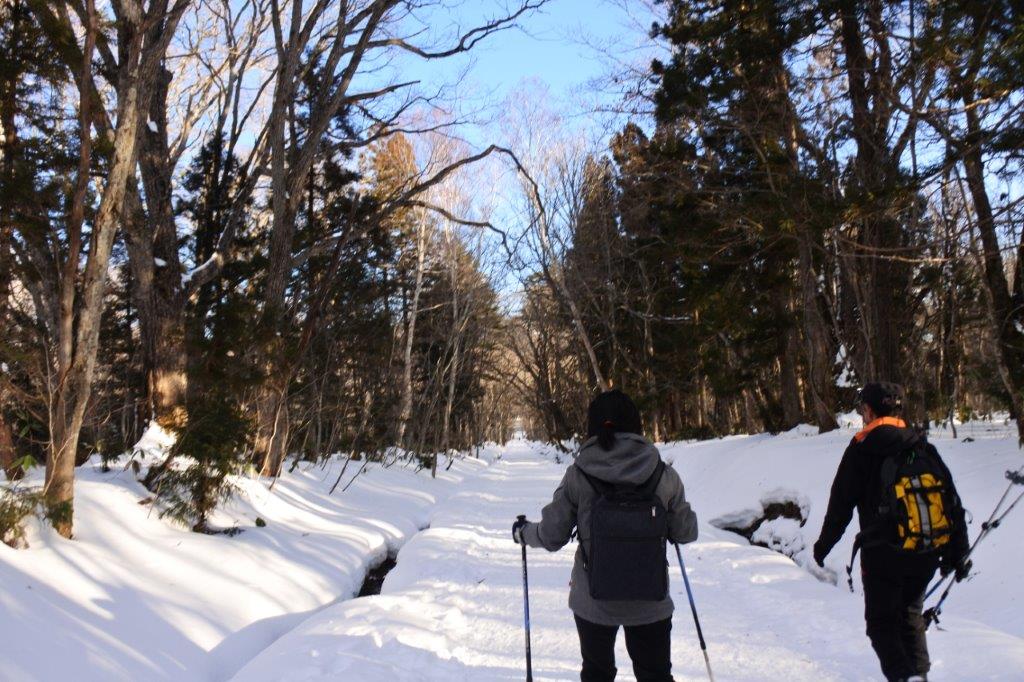
When asking locals what season is the best time to come visit, they say that every season has its own attractions. From birds chirping and trees shielding hikers from the summer heat to quiet snowy winter days animal trail spotting and snowshoeing, there's no bad time to visit.

Trails wind around for kilometers and connect shrines and temples to campgrounds and lakes. The trails' cedar trees have watched over visitors for centuries, and surprisingly most of them can be traced to one mother tree. A walk along the cedar-lined trails is a deeply spiritual and peaceful experience. Do not hesitate to rest along the way to take in the scenery and sounds, and of course, the stories that your guide will share.
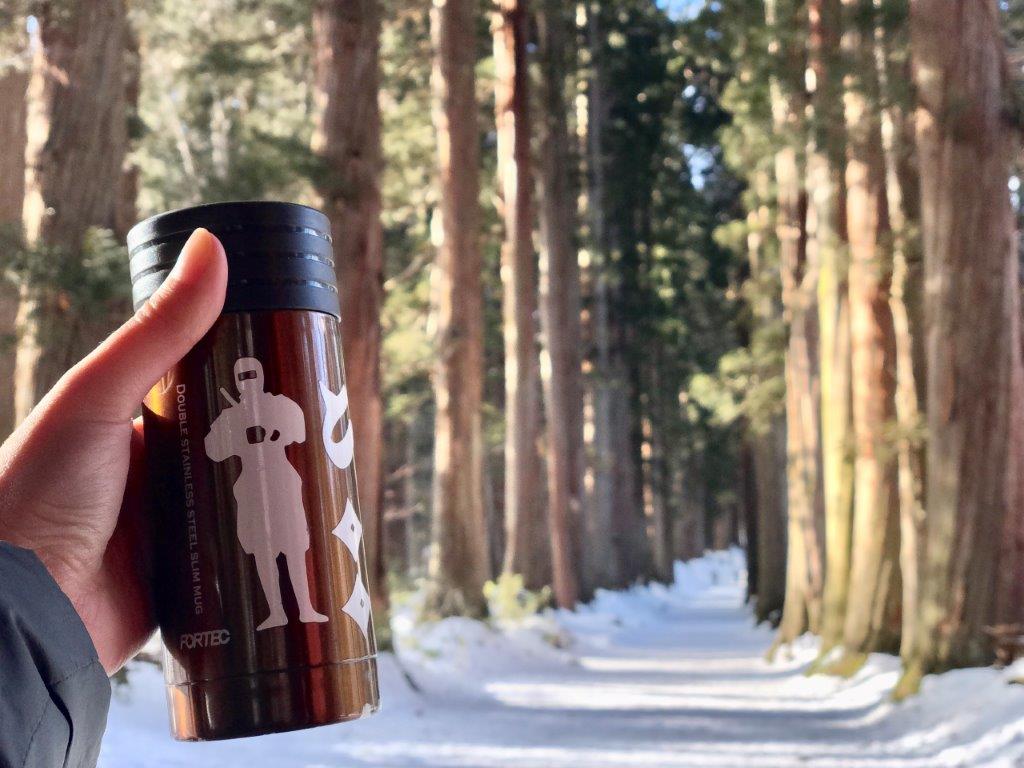
There may not be enough time to cover all the trails in one afternoon, but Togakushi is easily accessible by bus and car, and campers are welcome. Aside from the nature, grand mountain views and peaceful trails, Togakushi also offers a folklore museum, a ninja museum and training center, and a soba museum. Although not as well-known as neighboring Hakuba and Nozawa Onsen, Togakushi also offers high-altitude ski resorts and powder snow.

Enjoy the sunset views on the drive back down the mountains as you reflect on your one-day spiritual journey. With an early morning start and energetic activities, you're sure to be ready to end the day at one of Nagano's many onsen hot spring hotels!
















